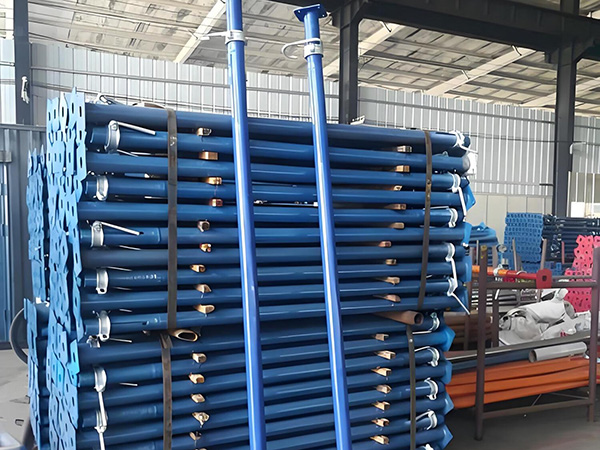- Site Navigation -

Temporary Steel Support
Temporary Steel Support refers to a removable,load-bearing structural component made of high-strength steel,widely used in construction,infrastructure,and industrial maintenance pro......
Temporary Steel Support refers to a removable,load-bearing structural component made of high-strength steel,widely used in construction,infrastructure,and industrial maintenance projects.As the name implies,it serves short-term load-bearing and bracing purposes—providing stable support during concrete curing,structural assembly,or equipment installation—before being dismantled once permanent structures take effect.Its key advantages include high load capacity,strong durability,and adaptability to complex construction environments,making it a critical safeguard for temporary structural stability and construction safety.
Core Structural Features
Temporary Steel Support is designed for"reliability"and"versatility,"with typical components tailored to different load demands:
Load-Bearing Body:Mostly made of Q235/Q355 carbon steel or alloy steel,in forms of seamless steel tubes(common diameters:Φ48-Φ108mm,wall thickness 3-6mm),I-beams,or channel steels.The tube-type body is lightweight yet rigid,ideal for vertical support;the profile-type(I-beam/channel steel)excels in lateral bracing due to high bending resistance.
Connection&Adjustment Parts:For adjustable models,it includes telescopic inner/outer tubes(with adjustment holes)and locking pins/bolts to adapt to varying heights(adjustment range:500mm-5m).Fixed models use flange plates or welding interfaces for quick assembly with other structures.
Bearing Plates:Top and bottom plates(square:100×100mm-200×200mm;circular:diameter 100-200mm,thickness≥5mm)to expand contact area—preventing the support from sinking into soft ground(bottom plate)or damaging the supported structure(top plate).
Reinforcement Components:Triangular steel ribs welded at joints(e.g.,plate-tube connections)to enhance shear resistance,avoiding deformation at stress-concentrated points under heavy loads.
Main Classification
By Usage Scenario:
Vertical Support:Used for vertical load-bearing,such as supporting formwork during concrete pouring(e.g.,floor slabs,beams)or holding prefabricated components(e.g.,concrete panels)in place.
Lateral Bracing:Installed horizontally/obliquely to resist lateral forces,like stabilizing scaffold systems against wind loads or preventing wall/formwork from tilting.
By Adjustability:
Adjustable Support:With telescopic structure,suitable for scenarios needing height fine-tuning(e.g.,uneven ground,variable formwork heights).
Fixed Support:With fixed length/profile,for standard-height,stable-load scenarios(e.g.,temporary bracing of steel frames).
Typical Applications
Construction Projects:Temporary support for concrete formwork(e.g.,beam,column,and slab formwork)during curing;bracing for masonry walls or prefabricated wall panels to prevent collapse during installation.
Infrastructure Maintenance:Used in bridge repair(supporting bridge decks during deck replacement)or road construction(bracing temporary road barriers);in tunnel projects,it supports tunnel linings during concrete spraying.
Industrial Settings:Temporary support for heavy equipment(e.g.,generators,conveyors)during maintenance;bracing for factory steel structures(e.g.,roof trusses)during expansion or renovation.
Usage&Safety Guidelines
Load Matching:Select supports based on calculated loads(e.g.,concrete weight,equipment weight+construction live loads);never exceed the rated load(standard vertical supports:≤30kN;heavy-duty ones:≤80kN).
Proper Installation:Ensure vertical supports are plumb(verticality deviation≤1°)to avoid eccentric loading;lateral braces should form stable triangles with the main structure.Install base plates on solid,level ground—use steel pads(≥200×200mm)on soft soil.
Secure Locking:For adjustable models,confirm the locking pin/bolt fully inserts into adjustment holes and is tightened;recheck after 15-30 minutes of initial loading to prevent loosening.
Inspection&Dismantling:Before use,check for cracks,bent tubes,worn locking parts,or rust(rusted area>10%of surface means scrapping).Dismantle only when permanent structures reach design strength(e.g.,concrete compressive strength≥75%of design value);dismantle in a top-down,symmetric order to avoid sudden load shifts.








